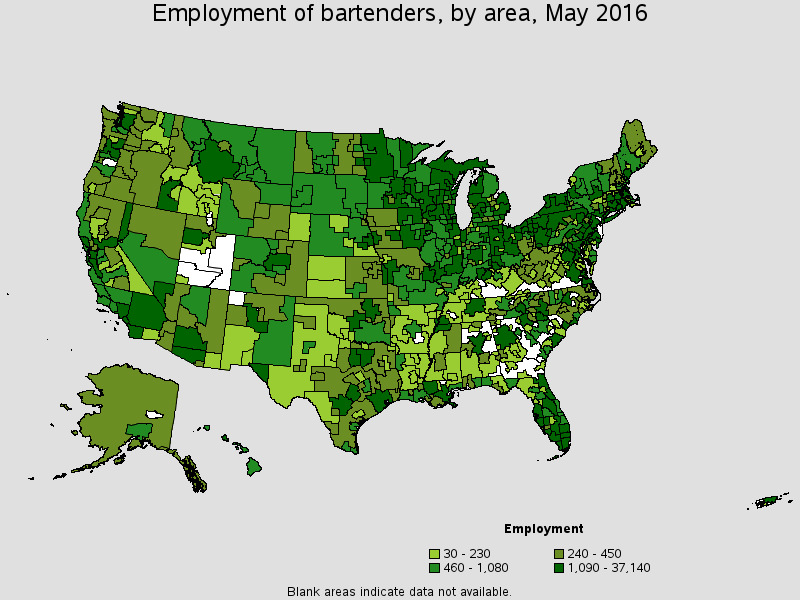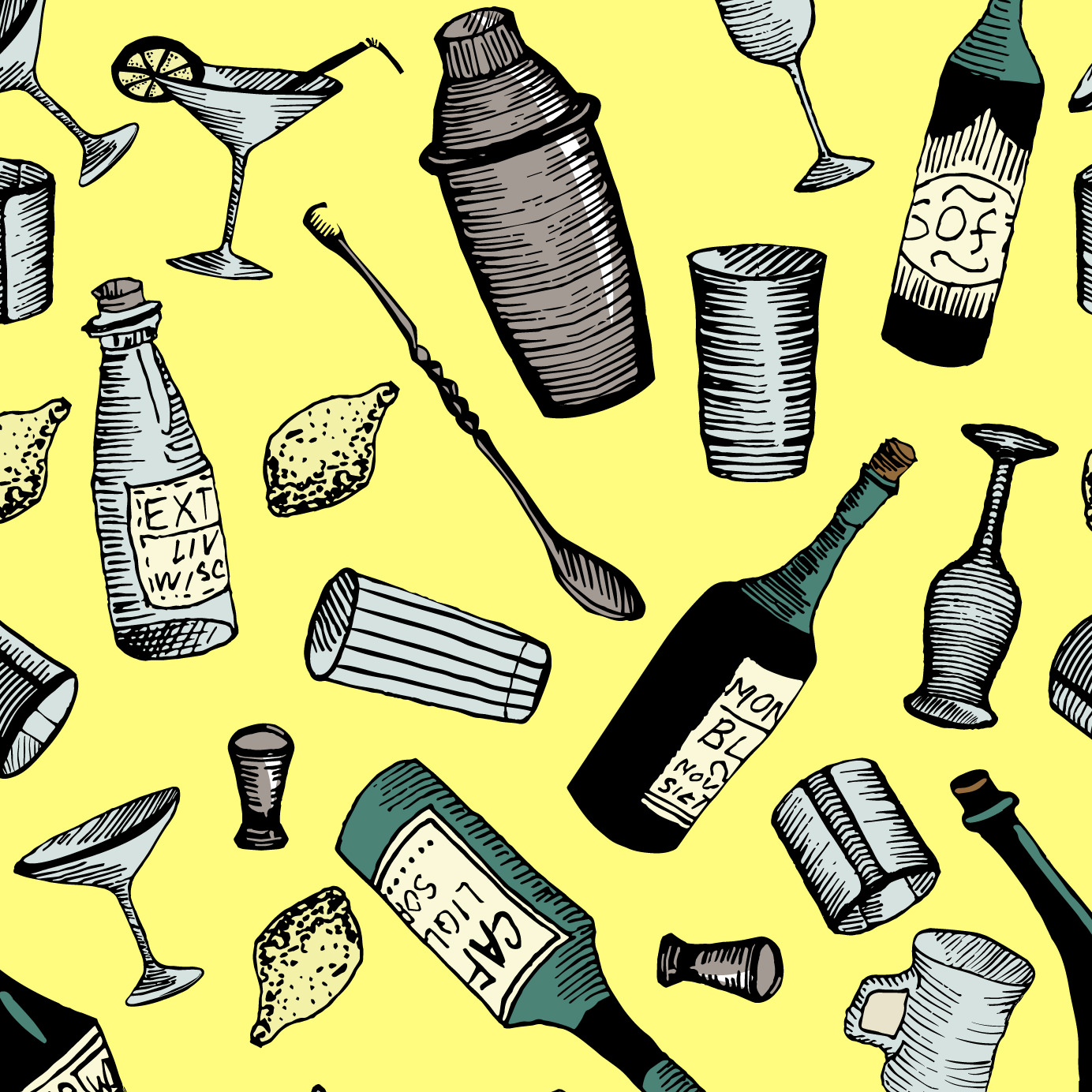There were more than 580,000 working bartenders in the U.S. in 2014, according to the Bureau of Labor Statistics (BLS). That staggering number is supposed to grow to more than 640,000 by 2024. That’s a 10 percent increase, which means that the corps of bartenders is growing faster than the average increase of all other occupations. This exponential growth has been on the incline since the Great Recession. Now, craft cocktail bars have elevated the drinks space like never before.
VinePair looked at 2016 data and maps released by the BLS to assess what it’s like for the growing number of bartenders in the U.S. For a little more context behind the numbers, we spoke with Jeremy J.F. Thompson, the marketing manager for Tales of the Cocktail, one of the premier bartender industry organizations.
Here is the current state of bartending in the United States.
Employment of Bartenders by State

The raw number of how many bartenders are working in a state largely depends on three factors: the population of that state, the number and size of major urban areas in that state, and the tourism industry of that state. Given all that, it makes sense that California with its 57,340 bartenders, New York with its 43,670, and Florida with 42,510 are the top three states in terms of bartender employments. Texas and Pennsylvania round out the top five.
While the total employment numbers are interesting (and could point to some fun vacation spots), the percentage of bartenders is a more telling number.
Employment of Bartenders by Quotient

The BLS defines the quotient as “the ratio of the area concentration of occupational employment to the national average concentration.” More than one means that there is a higher percentage of employment than average in a state, while less than one is less than average.
Ohio best represents the average with just over four bartenders for every 1,000 residents. Utah has the lowest quotient with 1.67 bartenders for every 1,000 Utahns, and Montana has the highest, with 11.74 bartenders for every 1,000 residents. States with smaller populations generally have a higher percentage of people working in bars. The top five are Montana, Nevada, Wisconsin, North Dakota, and Wyoming.
Thompson has some advice for aspiring bartenders choosing a location to work. “At the end of the day, the best place to tend bar is whichever place best meets your expectations as a bartender,” Thompson says. “If you’d like to dress however you want and forgo having to use any glassware, then a dive bar in New Orleans is an excellent choice. If you want to create elegant cocktails and sell them at a premium price (along with the hope of a premium tip), N.Y.C. is a good place to start.”
Annual Mean Wage of Bartenders

The Bureau of Labor Statistics has some data about how much bartenders make, too, though Thompson advises some level of suspicion with regard to those numbers. “No one should trust that data,” Thompson tells me. “I’m sure the Bureau of Labor Statistics did a thorough job in the process, but bartending is not like most other occupations. Your tips make all the difference, but who knows what the future holds.”
The BLS calculated annual wages by multiplying the hourly mean wage by a “year-round, full-time” hour figure. But Thompson says this is misleading. “For one, conveying a bartender’s wages without taking into account what she or he earns in gratuities is a bit absurd,” Thompson says. “It also raises another question: In calculating how many bartenders work in each of these cities, shouldn’t we also take into account the very large number of bartenders who are paid strictly in gratuity, despite the legal ramifications?”
With that caveat in mind, there are some states where average regular wages are substantially higher — many of which have higher costs of living. The top five are Hawaii ($41,160), D.C. (counted as a state by the BLS with an average wage of $34,820), California ($32,280), Alaska ($31,560) and Washington ($31,100). Those states aren’t all necessarily known for an abundance of great bartenders, but they do have very high costs of living. The lowest paying states are the states with low minimum wages, like Georgia, Mississippi, Arkansas, and Montana.
Metropolitan Areas With the Most Bartenders

New York City, Chicago, Los Angeles, Las Vegas, and Houston were the metropolitan areas with the most bartenders. In the New York metropolitan area, widely considered one of the best areas for bars and cocktails, there are 4.27 bartenders per 1,000 residents, versus the 1.12 bartenders per 1,000 residents in the state.
“Moving to a major market as a prospective bartender at this point in time is not so different than ambitious pretty faces moving to Hollywood in the 1940s with the expectation that they’d become a star,” Thompson says. “If you’re interested in becoming a career bartender, heading to a big city to earn your chops isn’t a terrible idea, just so long as you know what you’re up against and what you’re willing and able to do to achieve your goal.”
As for the next big up-and-coming bar city? Well, that’s up in the air. “If there’s a clean glass and more than a dozen bottles of booze to be found, a bartender will find his or her way there and get to work,” says Thompson.
As more and more bartenders find gainful employment in the U.S. (and more people flock to bartending schools to learn a new trade), that statement seems more true every day.
